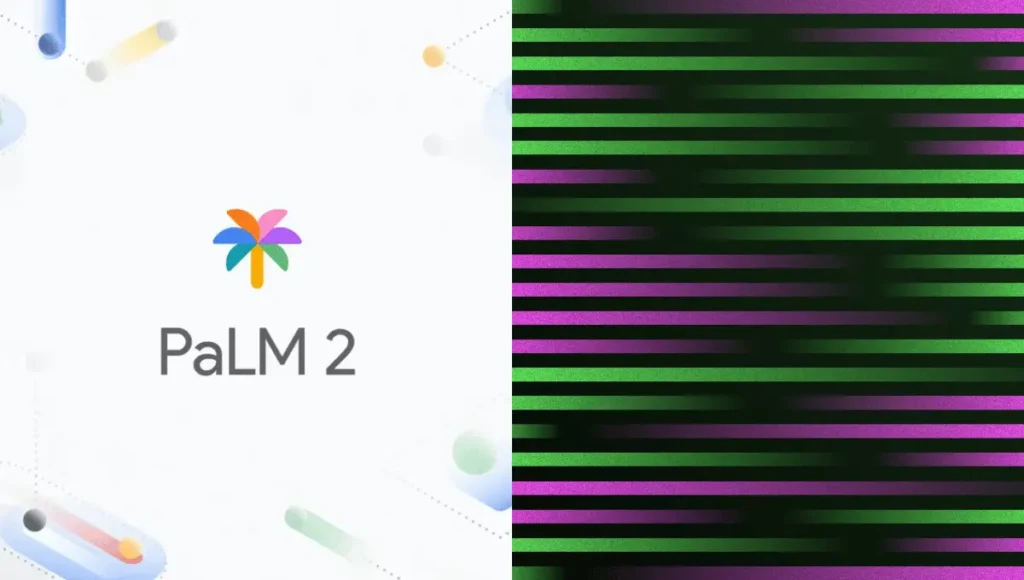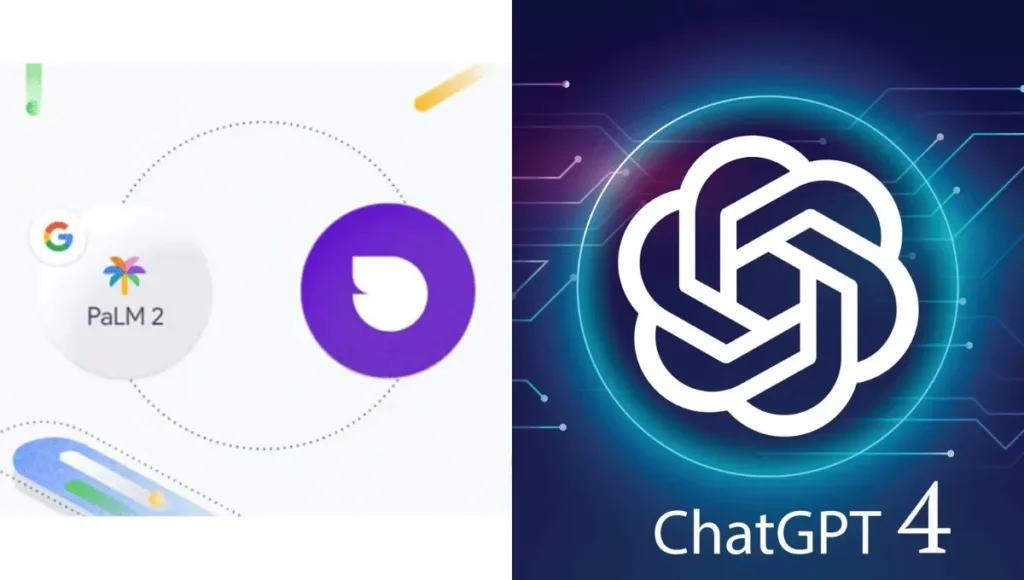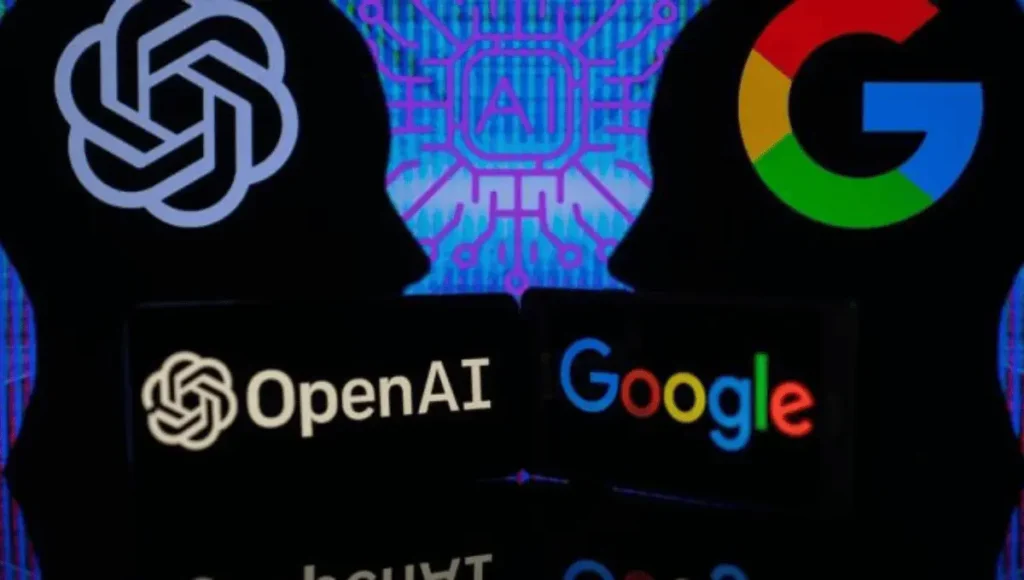In the rapidly evolving world of artificial intelligence (AI), language models have made considerable progress in recent years. Two very powerful within the area are GPT-4 and PALM-2 AI. These superior language models have captured interest for their skills and potential impact throughout diverse domain names. In this article, we will examine an in-depth assessment between GPT-4 vs PALM-2 AI, exploring their key capabilities, advancements, and potential applications.
What is GPT-4

GPT-4, short for Generative Pre-skilled Transformer 4, represents the latest generation of OpenAI’s language model series. Building upon the successes of its predecessor, GPT-3, GPT-4 brings numerous enhancements to the table.
Enhanced Contextual Understanding:
GPT-4 boasts a tremendous increase in model length, allowing it to better understand and generate human-like text across a wide variety of subjects. Its elevated memory capacity allows it to retain contextual records over longer passages, resulting in more coherent and contextually aware responses.
Multimodal Capabilities:
One of the significant advancements in GPT-4 is its integration of multimodal capabilities. This means it can process and generate text alongside other forms of media, including images, audio, and video. This integration paves the way for more immersive and interactive applications.
Few-shot and Zero-shot Learning:
GPT-4 further refines the concept of few-shot and zero-shot learning. It can generalize from a smaller set of examples and apply the learned knowledge to unseen tasks. This empowers developers and users to work with the model even when limited training data is available.
What is PALM-2 AI

PALM-2 AI (Progressive And Layered Memory) is an innovative language model developed by a research team at a leading AI institute. This model takes a unique approach to learning and memory compared to GPT-4.
Hierarchical Memory Architecture:
PALM-2 AI adopts a hierarchical memory structure, allowing it to store information at different stages of abstraction. This design permits more efficient utilization and improves the model’s ability to recall and reason over long-range dependencies.
Interpretable Representations:
PALM-2 AI focuses on generating more interpretable representations of language. By doing so, it aims to enhance the model’s transparency and provide users with insights into how the model arrives at its outputs. This interpretability can be critical in sensitive domains where explainability is a requirement.
Incremental Learning:
PALM-2 AI excels in incremental learning, where it can acquire new knowledge and skills over time. The model’s ability to build upon existing knowledge and adapt to changing contexts makes it highly suitable for applications that require continuous learning and evolution.
Comparative Analysis
Now that we’ve explored the key functions of GPT-4 and PALM-2 AI, let’s compare them across various aspects:

Model Size and Performance:
GPT-4’s larger model size gives it an advantage in generating more fluent and contextually aware responses. PALM-2 AI, with its hierarchical memory structure, focuses on long-range dependencies and interpretability. The choice between the models relies upon the particular use case and requirements.
Multimodal Capabilities:
While GPT-4 has made significant strides in incorporating multimodal abilities, PALM-2 AI’s attention on interpretable representations may be exceptional in domains where understanding and explaining the model’s decision-making system is important.
Few-shot and Incremental Learning:
GPT-4 and PALM-2 AI both excel in few-shot and incremental learning scenarios. However, GPT-4’s approach to few-shot learning allows it to generalize from a smaller set of examples and adapt to new tasks more effectively. This makes it well-suited for applications where fast learning and adaptation to new domains are essential.
On the other hand, PALM-2 AI’s incremental learning skills shine in situations where the model needs to continuously acquire new knowledge and update its information. Its hierarchical memory architecture helps in the efficient incorporation of new data while retaining existing knowledge.
Ethical Considerations and Bias:
As language models grow to be increasingly more powerful, moral concerns and the mitigation of biases emerge as paramount. Both GPT-4 and PALM-2 AI emphasize addressing biases and promoting fairness in their education procedures. However, particular measures and strategies employed via every version may additionally range, and developers need to cautiously evaluate those elements primarily based on their undertaking requirements.
Potential Applications
The advancements in GPT-4 and PALM-2 AI open up interesting opportunities across several domains:
Natural Language Understanding:
Both models excel in natural language understanding tasks, including question-answering, sentiment analysis, and language translation. Their improved contextual understanding and larger knowledge base contribute to more accurate responses.
Creative Writing and Content Generation:
GPT-4 and PALM-2 AI offer enormous potential for generating creative content, including storytelling, scriptwriting, and personalized recommendations. Their ability to generate coherent and engaging text makes them valuable tools for content creators.
Virtual Assistants and Customer Support:
Integrating GPT-4 or PALM-2 AI into virtual assistants and customer service systems can enhance user experiences. These models can provide more accurate and context-aware responses, leading to improved customer satisfaction and efficiency in resolving queries.

Research and Scientific Discovery:
Researchers can leverage the abilities of GPT-4 and PALM-2 AI to aid in literature reviews, data analysis, and speculation generation. These models can help in uncovering valuable insights, accelerating scientific progress, and facilitating interdisciplinary collaborations.
Limitations and Challenges
While GPT-4 and PALM-2 AI provide widespread advancements, it’s important to take into account their boundaries and challenges:
Training Data Biases:
Both models depend on substantial amounts of text data from the web, which can introduce biases and reinforce existing societal prejudices. Efforts to mitigate biases in training data and promote fairness are vital to ensure responsible and impartial AI systems.
Computational Resources:
The increased model size and complexity of GPT-4 and PALM-2 AI require significant computational resources for training and deployment. This can pose challenges for organizations with limited infrastructure and may limit access to those models.
Ethical and Privacy Concerns:
Language models like GPT-4 and PALM-2 AI raise ethical concerns regarding privacy, data usage, and potential misuse. Protecting user data and ensuring responsible deployment and utilization are crucial to address these concerns.
Explainability and Transparency:
Despite PALM-2 AI’s focus on interpretability, language models, in general, can still struggle to provide clear explanations for their decision-making processes. Enhancing transparency and explainability of AI systems is an ongoing research area to foster trust and responsibility.
Future Developments and Impact

The ongoing improvements in language models, represented through GPT-4 and PALM-2 AI, preserve promise for further transformative effect. Some potential future developments consist of:
Continued Model Scaling:
Future iterations might also witness even larger models, allowing deeper contextual knowledge and more accurate responses. However, addressing the related computational requirements and biases will remain vital.
Human-AI Collaboration:
Efforts to enhance human-AI collaboration can leverage the strengths of GPT-4 and PALM-2 AI. Integrating those models as assistants that supplement human understanding can result in breakthroughs in research, creativity, and decision-making.
Domain-Specific Customization:
Developers might also pay attention to fine-tuning GPT-4 and PALM-2 AI for specific domains, allowing more specialized and tailored applications. This customization can lead to improved performance and efficiency in domain-specific tasks.
Addressing Ethical and Social Implications:
As language models become more powerful and pervasive, addressing ethical concerns and ensuring equitable access and utilization will be essential. Ongoing research and policy developments will shape the ethical and social impact of these models.
Conclusion
GPT-4 and PALM-2 AI represent significant advancements in the field of language models, with each model bringing unique features and abilities. While GPT-4 excels in contextual knowledge, multimodal integration, and few-shot learning, PALM-2 AI focuses on hierarchical memory structure, interpretability, and incremental learning. Both models offer exciting opportunities in various domains, including natural language understanding, creative writing, virtual assistants, and medical research.





All Comments
I want to express my appreciation for the well-structured and well-written nature of this article. It flows seamlessly from one point to the next, making it easy to follow and understand. The author’s ability to present complex ideas in a clear and concise manner is commendable.